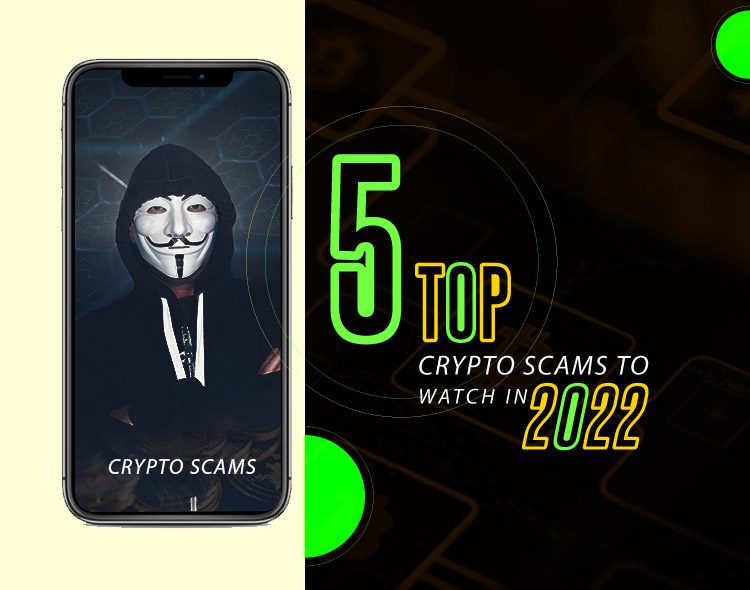Investors now need to be smarter to understand the phycology of the crypto market so that they can be more careful and stay at the lower side of risk. In this article, the crypto scams shall be highlighted for 2022 which deceived the global consumers who were lured by its high returns but in the end lost everything.
Phishing Scams
Such scams have into existence for ages and they work in a regular pattern in which you get an email or a link that shall be directing you to a website that in turn steals all your credentials. But in this new era, cryptocurrency phishing scams steal crypto wallets along with their passwords which can make anything do, like accessing the cryptocurrency and NFTs. Such breaches could involve a bank account, PayPal account, Venmo account, and crypto account which can be threatful. Digital asset owners should follow many of the same precautions internet users have always used against phishing scams: We must avoid opening any unknown attachments and visiting any unvetted website.
Investment Schemes
Such has been practiced traditionally with few upgrades. One recent example outside the crypto world involves a biopharmaceutical company, Theranos, which once had claimed to develop a blood test technology that would create a revolution, but the jury found that the blood tests were not capable of consistently producing accurate results, and found it guilty of wire fraud in an investment scheme worth more than $1 billion. It is basically the responsibility of the investors to do the needed due diligence so as to be sure to understand the risks involved before betting on a crypto venture.
Read: Most Trending Crypto Wallet Of 2023 – Phantom
Unsustainable Projects
One must be reluctant to jump into investments that one doesn’t know much about, which is a good rule of thumb. Instead, investors should think twice about the risk and clearly distinguish risk from a scam. In Layman’s language, not every crypto scam starts out as a scam; few are unsustainable projects. What we have heard about Terra (LUNA), Celsius and BlockFi is not a scam, but they all tried to do something that was not sustainable and there are a plethora of examples that failed because they were not sensible financially.
Registered Broker Scam
This is a whole set-up acting-based scam where a bad actor calls an investor pretending to be a registered broker who is a real scammer person. The scammer creates a good-looking website with fake reviews and tells the investor to check the site which creates trust in scammers and here comes the turning point where clients get trapped. The scammer gets clients to send money and promising them to invest it in crypto for them but instead steals it and flies. It is also known as “the plain old romance scam”: A crypto holder might think they have a partner in a foreign country, and when his/her partner pleads for money by giving an excuse, and after the account gets credited he/she disappears.
Meme Coins
These are cryptocurrencies inspired by an internet meme or joke. One recent example of a coin rush was the Dogecoin (DOGE) surge of 2021. As we know, Dogecoin wasn’t invented to be a scam rather, the coins themselves were pure speculation. It was created, at least in part, as a way to poke fun at Bitcoin (BTC). The problem with meme coins like DOGE is that they don’t have a use case and aren’t supposed to have a use case. Few meme coins do have a utility behind them, though, and that can give them merit similar to other types of investments. Of course, other so-called digital assets can be outright fakes. The promotion of fake NFT campaigns on Instagram has helped scammers make a fortune defrauding users. To avoid such scams, one needs to be skeptical of heavily hyped products and, as always, proceed with caution when making any new investment.
Read: A Global Map Of Cryptocurrency Regulations
[To share your insights with us, please write to sghosh@martechseries.com]
